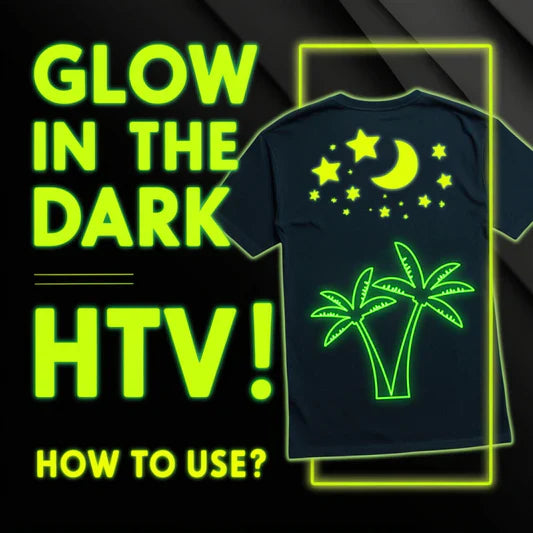Great price and quality! 10ft rolls available compared to my local craft shop in the UK.

Heat Transfer Vinyl vs Iron On: Is There a Difference?
Updated By TeckWrap Craft On April 16, 2025

Table Of Contents
The terms Heat Transfer Vinyl (HTV) and Iron-on Vinyl are often used interchangeably. Many people consider HTV to be the same as iron-on vinyl. There is essentially no difference between the two. They are the same and are used for decorating compatible fabrics with custom designs. Let’s see the reasons for having these two terms.
Why The Two Names?
'Iron-on' is a term coined by Cricut to make HTV more appealing to home crafters. It creates the impression that this vinyl is not only for business owners, but any hobbyist can design apparel with it or improve their own wardrobe, broadening the customer base of the material. The word ‘Iron-on’ also implies that this vinyl can be applied using a household iron as well, giving it a more accessible and user-friendly feel.
On the other hand, professionals and business owners use the term heat transfer vinyl, recognizing its value in commercial production using a heat press machine. This makes HTV suitable for both creative expression and large-scale manufacturing. Hence, the versatility of this vinyl continues to attract a wide spectrum of users, from weekend crafters to full-time apparel designers.

Uses Of Heat Transfer Vinyl
Both Heat Transfer Vinyl and Iron-on Vinyl can be used for various creative projects such as:
- Designing T-shirts and Apparel: You can add custom designs, logos, or quotes to clothing, including t-shirts, sweatshirts, hoodies, and jackets.
- Customizing Hats and Caps: HTV allows you to personalize hats with unique patterns, text, or logos.
- Tote Bags and Wallets: Who wouldn’t want a bespoke tote bag or wallet? You can easily create custom designs on these with HTV or Iron-on Vinyl.
- Soft Home Decor: Add personalized designs to pillows, couch throws, curtains, table mats, chair covers, and other items that define soft home decor.
- Baby Items: Premium-quality HTV or Iron-on vinyl is eco-friendly and non-toxic so you can create cute and personalized designs for baby onesies, bibs, and blankets without any apprehensions about health hazards.
- Unique Sports Gear: Customize jerseys, shorts, or gym bags with names and team logos. Your sports apparel should be different from the rest.

Variety In Heat Transfer Vinyl
Heat Transfer Vinyl is available in many different finishes each with its own unique look and texture adding beauty to your craft. These include:
- PU Heat Transfer Vinyl: This is a glossy film that comes in pastel, neutral, and basic colors. If you are a beginner, we recommend using this to learn the ropes.
- Glitter HTV: If you're looking to add some sparkle to your shirt, Glitter HTV is the perfect choice for you. It is also available in Glow in the Dark, Puff, and UV Color Changing variants.
- Puff HTV: This amazing Heat Transfer Vinyl film ‘puffs’ up giving a 3D look to your designs when heat and pressure are applied to it.
- Holographic HTV: This vibrant holographic film has a brilliant shimmer that presents an array of shades when light falls on it from different angles.
- Metallic HTV: The metal-like sheen of this Heat Transfer Vinyl sets it apart from the rest. You can get it in chrome, pearlescent, and holographic variants too.
- Glow in the Dark Vinyl: This Glow in the Dark HTV creates magic by giving a soft glow when exposed to complete darkness.
- Reflective HTV: This Heat Transfer Vinyl offers both style and functionality and is an amazing choice for safety gear.
- Chameleon HTV: If you want to give a two-toned look to your design, this is the vinyl for you. Its color shifts when light falls on it from different angles.
- Color-Changing HTV: This is another magical HTV film that changes shades when exposed to sunlight. When you go out, your HTV design will be of a different color than what it was indoors.
- Pattern HTV: If you want an abstract splash of colors on your design, this pattern vinyl for you. It looks amazing on monochrome fabrics.
Durability
The best thing about Heat Transfer Vinyl is that it is designed to be long-lasting when applied correctly. If you have bought a high-quality vinyl and applied it properly using the correct settings of heat, time, and pressure on the heat press, it will stay as long as the life of the garment provided it is washed with hands in a mild detergent. To maintain its condition, it's recommended to wash items designed with it inside out, use cold water, and let them air dry.

Application
For the application of Iron-on Vinyl designs, you will need the same tools however, in place of a heat press machine, you can use the common household dry iron. The method of applying will also be the same till the weeding of the design. After this, follow the steps mentioned below:
- Place the garment on a steady, hard surface that can bear the pressure. Do not use an ironing board.
- Place your Iron-on Vinyl pattern on the garment, put parchment paper on top then preheat your iron on the cotton setting. This is the highest heat setting.
- When the iron is ready, place it on the pattern and apply even pressure for the recommended time. Make sure that the whole pattern is covered with iron for excellent results.
- When the time is up, let the design cool down then slowly remove the carrier sheet. You have successfully transferred your Iron-on Vinyl design.

Frequently Asked Questions
More Articles You’ll Find Helpful
Keep Crafting with Us
- Choosing a selection results in a full page refresh.
!








